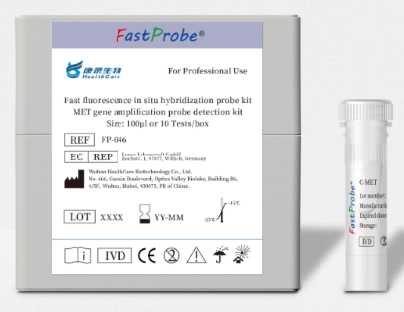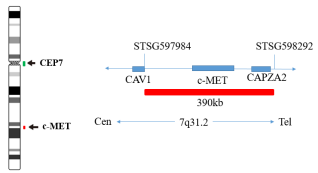IVD - FP046 C-MET Gene Detection Probe Detection Kit

Cat.# FP-046: MET Gene Detection Probe Detection Kit (IVD)
[Overview]
Mesenchymal Epithelial Transition MET is a prototypical receptor tyrosine kinase. Its ligand is Hepatocyte Growth Factor (HGF). MET alterations are drivers of human cancer. Amplification and resulting overexpression has been reported in several cancers and make the receptor's activity independent of HGF. Gene fusions also decouple kinase activity from the cell membrane and render it constitutively active. Finally, exclusion of the juxta membrane (JM) domain of the kinase by "skipping" of exon 14 activates the kinase.
This gene encodes a member of the receptor tyrosine kinase family of proteins and the product of the proto-oncogene MET. The encoded preproprotein is proteolytically processed to generate alpha and beta subunits that are linked via disulfide bonds to form the mature receptor. Further processing of the beta subunit results in the formation of the M10 peptide, which has been shown to reduce lung fibrosis. Binding of its ligand, hepatocyte growth factor, induces dimerization and activation of the receptor, which plays a role in cellular survival, embryogenesis, and cellular migration and invasion. Mutations in this gene are associated with papillary renal cell carcinoma, hepatocellular carcinoma, and various head and neck cancers. Amplification and overexpression of this gene are also associated with multiple human cancers.

[Download] MET Gene Detection Probe Instructions
[Download MSDS] MSDS

